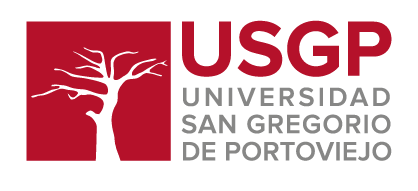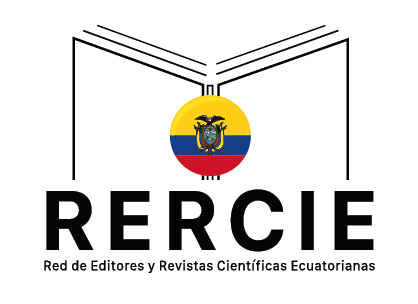Corruption manifestations as a threat to national security: new challenges and problems of counteraction in the Ukrainian realities
DOI:
https://doi.org/10.36097/rsan.v1i46.1777Palabras clave:
corruption, effective counteraction, national securityResumen
There are always some plagues that can destroy a society if proper measures are not manifested, one of such devastating and consequential destructive burden is that of corruption. Corruption as we all understand and characterised has been considered as a social phenomenon recognized in many instances as one of the main negative factors for Ukraine. This is especially true of high risks for the future of the state. Unfortunately, the stigma of a corrupt state for Ukraine (one that suffers from corruption at all levels of the public and private sectors) is a negative factor, first of all, its economic attractiveness. It is clear that the above-mentioned corruption background is not only an indicator of serious problems within the country, but also creates a significant obstacle to Ukraine's international image and reputation, which, in turn, impairs the quality of potential interaction with the outside world. All this allows researchers of these processes, both domestic and foreign, to call corruption one of the most dangerous threats to Ukraine, as the most serious internal problem, which is a threat to Ukraine's national security.
Citas
Abjorensen, N. (2014). Combating corruption: implications of the g20 action plan for the Asia-Pacific region. Tokyo, Japan: Konrad-Adenauer-Stiftung.
Bajpai, R., and Myers, B. (2020). Enhancing government effectiveness and transparency: the fight against corruption (English). Washington, D.C.: World Bank Group. Retrieved from https://enknowledge.worldbank.org/handle/10986/34533.
Botrić, V. (2020). Managers’ Perception of Corruption in Croatia, Serbia and Slovenia. Croatian and comparative public administration, 20(4), 699–731.
Chan, K. S., and Laffargue, J. P. (2016). A dynamic model of taxation, corruption, and public investment in the dynastic cycle: The case of Imperial China. Macroeconomic Dynamics. Cambridge University Press, 20(8), 2123–2147.
Christensen, H. B., Maffett, M. G., and Rauter T. (2019). Policeman for the World: US Enforcement of Foreign Corruption Regulation and Corporate Investment Policies. SSRN Electronic Journal. Retrieved from https://papers.ssrn.com/sol3/papers.cfm?abstract_id=3349272.
Colonnelli, E., and Prem, M. (2017). Corruption and Firms: Evidence from Randomized Audits in Brazil. Working Paper. Retrieved from https://siepr.stanford.edu/sites/default/files/publications/18-060.pdf.
Firmansyah, Santoso, T., Febrian and Nashriana. (2020). Reconstruction to Prove Elements of Detrimental to State Finances in the Criminal Act of Corruption in Indonesia. JURNAL CITA HUKUM (Indonesian Law Journal), 8(3), 671-692. Available at DOI: 10.15408/jch.v8i3.18295
Fishman, R., and Swenson, J. (2007). Are corruption and taxation really harmful to growth? Firm level evidence. Journal of Development Economics, 83(1), 63-75, May.
Goel, K., and Nelson, M. (2010). Causes of Corruption: History, Geography and Government. Journal of Policy Modeling, 32(4), 433–447, July–August.
Hombach, K., and Sellhorn, T. (2018). Firm Value Effects of Targeted Disclosure Regulation: The Role of Reputational Costs. Working Paper. Retrieved from https://papers.ssrn.com/sol3/papers.cfm?abstract_id=3204505.
IBAC annual report 2019/20 extract of Victoria police information. Retrieved from https://www.ibac.vic.gov.au/docs/default-source/reports/ibac-annual-report-2019-20.pdf.
Kaufmann, D. (1997). Corruption: the facts. Foreign Policy, 107, 114-131. Retrieved from https://robobees.seas.harvard.edu/files/gov2126/files/kaufmann_1997.pdf.
Makarenko, V. S. (2020). General Principles of Anti-corruption in V4 Visegrad Countries: Experience of Hungary. Law and Safety, 2(77), 126-132.
Michel, J. (2009). Reducing Corruption in the Judiciary – USAID Program Brief, Office of Democracy and Governance. June. Retrieved from https://pdf.usaid.gov/pdf_docs/Pnadq106.pdf.
Okonjo-Iweala, N. (2019). Strategies for winning the fight against corruption. Retrieved from https://www.brookings.edu/blog/africa-in-focus/2019/01/15/strategies-for-winning-the-fight-against-corruption/.
Open Budget Survey. (2019). Retrieved from https://www.internationalbudget.org/sites/default/files/2020-04/2019_Report_EN.pdf.
Organized Crime Control Act of 1970. Public law 91-452. October 15, 1970. Retrieved from https://www.govinfo.gov/content/pkg/STATUTE-84/pdf/STATUTE-84-Pg922-3.pdf.
Rauter, T. (2019). Disclosure regulation, corruption, and investment: evidence from natural resource extraction. Working Paper. Retrieved from https://www.semanticscholar.org/paper/Disclosure-Regulation-%2C-Corruption-%2C-and-Investment-Rauter/889abce2b333320b9340b5e70f2d2a4575c1a7c7?p2df.
The 15 ways people can fight corruption. (2017). Transparency International Report. August. Retrieved from https://www.transparency.org/en/news/15-ways-young-people-can-fight-corruption.
Ulain, N., and Hussain, F. (2020). Fighting Governmental Corruption in Pakistan: An Evaluation of Anti-Corruption Strategies. Croatian and Comparative Public Administration, 20(3), 439–468. Retrieved from https://doi.org/10.31297/hkju.20.3.2.
Zeume, S. (2017). Bribes and firm value. The Review of Financial Studies, 30(5), 1457–1489, May.
Descargas
Publicado
Cómo citar
Número
Sección
Licencia
 Esta obra está bajo una Licencia Creative Commons Atribución-NoComercial-SinDerivadas 4.0 Internacional (CC BY-NC-ND 4.0).
Esta obra está bajo una Licencia Creative Commons Atribución-NoComercial-SinDerivadas 4.0 Internacional (CC BY-NC-ND 4.0).
















